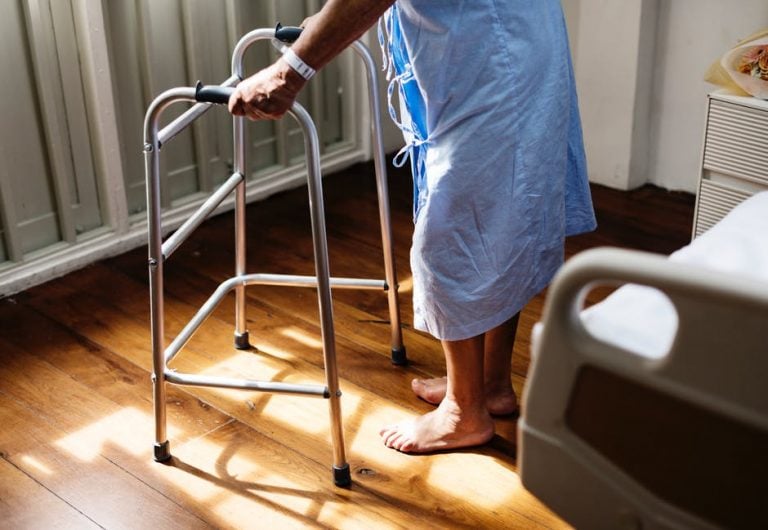If you are an Ontarian on the brink of retirement and the loss of your private, employer-based health insurance, you might wonder what's next.
Under the Canada Health Act, you have full access to Ontario's public health program - the Ontario Health Insurance Plan (OHIP). OHIP offers the same services to all Ontarians who qualify (Canadian citizens, residents, or Indigenous persons living in Ontario).
How will it compare to your current insurance, and what extra OHIP coverage is available to those over 65? We break down OHIP coverage for you in this simple guide.
What Does OHIP Cover for Seniors?
If you reside in Canada on a valid permit or as a Canadian citizen or Indigenous person, then you have the right to apply for an OHIP card.
OHIP offers all enrollees the same access to coverage with special exceptions for services for seniors and young people under 24.
What does it cover? You can avail of OHIP funded services for:
- GP services
- Nurse practitioner services
- Hospital services (including in-hospital dental surgery)
- Ambulance services
- Optometry services
- Podiatry services
- Physiotherapy services
- Prescription drug services
One of the essential things to know about OHIP is that it won't cover all your expenses in all cases.
It covers essential and medically necessary services at all times - you'll never get a bill for a GP visit or hospital service.
What doesn't OHIP cover? Here are a few places where you likely need to contribute to the service fee.
Ambulance
OHIP covers ambulance services in the case of a medical emergency. But it is likely you'll pay a co-pay.
If you take an ambulance to the hospital and the hospital recognizes the trip as medically necessary, then you will pay a co-pay of $45. You receive the bill from the hospital.
If the hospital deems the trip not medically necessary, your co-pay jumps to $240.
The only time OHIP covers the entire journey is when an Ontario health care facility (including hospitals) needs to transfer you to a facility in another province. They may do this when the treatment you need is not available in Ontario. In these cases, the whole trip is covered.
You also will not be charged for the ambulance service if you live in:
- OHIP licensed long-term care home
- Psychiatric home or residence
- Special care home
Patients receiving provincial social assistance or receiving specific home services also don't need to pay.
Optometry
OHIP doesn't cover any optometry services until you are age 65 or older.
Seniors receive one OHIP-funded major eye exam annually. If the optometrist requires further tests, then OHIP may cover these, too.
Podiatry
Podiatry visits technically receive coverage, but you only receive $7-16 of the cost of the visit with an annual cap of $135. You also have a $30 x-ray surgery.
Podiatry surgeries remain uncovered - even for seniors - unless they are significant surgeries occurring in a covered hospital.
Physiotherapy
Seniors receive access to physiotherapy services at out-patient physiotherapy clinics. Their coverage includes injury assessment and treatment as well as OHIP-funded exercise and falls prevention classes.
You may need a referral from your GP or a nurse practitioner. You also need to attend an OHIP-funded clinic to get the care.
Additionally, OHIP-funded services are short and last 20 minutes. Self-pay or insurance-based physiotherapy services are more comprehensive.
Funding physiotherapy for seniors has been the subject of debate. In 2013, the province suggested cutting the budget from $200 million to only $136 million. It, along with prescription drug issues, has been the victim of the healthcare austerity measures put in place in Ontario since the 2008 crash.
Prescription Drugs
OHIP pays for prescriptions for those age 65 or older or who live in a long-term care home or receive professional care services at home. Those enrolled in the Ontario Disability Support Program also receive coverage.
Seniors get their prescriptions through the Ontario Drug Benefit (ODB).
The ODB covers over 4,400 medications, and you can see if your drug is included using the government's search tool.
When you search for prescriptions, you may see that both the brand name and generic drug come up. You are covered for both, and you receive whatever costs less. You do not have to accept the generic version if you previously experienced adverse reactions to two other generic drugs.
While the ODB covers common prescriptions and helps seniors avoid co-pays, it does not cover all drugs. If you are an ODB enrollee and you have a prescription that the program fails to cover, you can apply for the Exceptional Access Program.
Your GP or nurse practitioner fills out the application on your behalf, and the government decides based on the type of drug and the severity or rarity of your medical condition.
Your GP will follow the same process if you need uncovered drugs, like oral or I.V. cancer drugs, which the ODB does not traditionally cover.
Coverage Outside Ontario
Whenever you travel both in Canada and further afield, you should be sure to bring your OHIP card with you.
Coverage outside Ontario varies.
In other provinces or territories, OHIP covers only GP visits and hospital services. However, the treatment must be medically necessary to be included.
OHIP doesn't cover prescription drugs, home-care services, or ambulance services outside Ontario. If you're planning to travel, you need to bring a complete supply of prescription drugs with you.
The provincial government suggests buying private health insurance if you intend to leave the province regularly to avoid interruption to your treatment.
Long-Term Care
Ontario subsidizes the cost of long-term care for seniors, but it still expects a monthly contribution for both long and short-stay care.
As of July 2018, the expected contribution is $1,848.73 per month for a basic room.
The price of semi-private and private rooms is $2,228.63 and $2,640.78 respectively.
Seniors Benefit from These Types of Insurance
Ontario's public health program pays for essential and necessary medical care. You'll never get a bill for GP or hospital services. However, the medical community expects the cost of healthcare to grow dramatically over the next decade and recently asked the federal government to add $21 billion to provincial health budgets.
Some of these costs will inevitably be passed on to seniors - and some already are.
Canadians over 65 who don't have private coverage spend an average of $5,391 per year on out-of-pocket costs. As cash-strapped provinces try to deal with the rising costs, seniors can expect that number to grow.
Unless you're one of the few Canadians who can continue their group coverage after retirement, you might consider the benefits of searching for private health insurance for seniors.
What kind of policies do you need? Canadian seniors should consider two types of insurance.
Health Insurance
If you lose your group insurance benefits upon retirement, you'll be reliant on OHIP. Although OHIP covers the essentials, a fixed retirement income may mean surprise medical bills are unwelcome.
Private health insurance creates plans for seniors that pick up the tab when the government won't.
You can find private health insurance that covers:
- Dental services (including visits)
- Semi-private and private hospital rooms
- Vision care
- Nursing care
- Prescription drugs
- Medical equipment
- Travel coverage
All of these include the items that seniors find they increasingly need but have limited-to-no coverage for under OHIP.
Life Insurance and Long Term Care Coverage
You will be expected to contribute thousands of dollars each month to your long-term care coverage if you need it.
For many, retirement savings won't cover long-term care for the duration of their stay.
Long-term care insurance is now costly thanks to the rising costs of care and the number of people living longer. However, you can buy life insurance that includes a long-term care rider.
If you enact the rider, you can use the policy to pay for long-term care without dipping into your retirement savings.
To qualify for these plans, you'll need to provide a medical exam and copies of your records.
Preparing for Retirement in Ontario
OHIP coverage includes all essential medical bills including GP and hospital services and now 4,400 prescription drugs. However, out-of-pocket costs can get expensive quickly, and they can be a source of great stress for seniors living on fixed incomes.
Many seniors find it prudent to supplement their OHIP coverage with several types of insurance, namely health insurance and life insurance. These policies pick up where the government leaves off, and offer protection in the face of government cuts to essential areas of health care.
Are you approaching retirement and wondering about what kind of health insurance will best complement your OHIP coverage?
Click here for a free quote and more information about private insurance in Canada.



